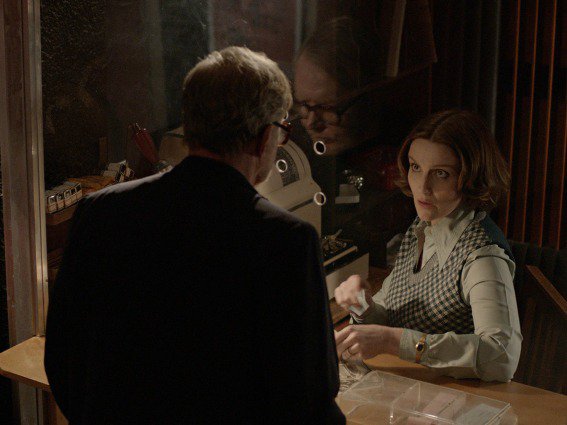Stan Douglas
dal 20/10/2015 al 13/2/2016
Segnalato da
20/10/2015
Stan Douglas
Museu Colecao Berardo, Lisboa
Interregnum. three recent works by the artist, all dealing with the same historical period, in which different aspirations of universalist and multicultural transformation of the world order emerge.

The exhibition Interregnum brings together three recent works by Stan Douglas, all dealing with the same historical period, in which different aspirations of universalist and multicultural transformation of the world order emerge. Portugal’s recent history, with the revolution of 25 April, 1974 and the end of colonialism, is everywhere present in these works, that also explore other cultural events, such as the emergence of jazz-rock , funk, disco, and afrobeat. What all these distinct realities share is the emergence of a project of political and multicultural emancipation, much desired but upon which new power configurations were overlaid.
Disco Angola (2012) and Luanda-Kinshasa (2013) were made while Stan Douglas was researching the transformation of Portuguese life in the 1970s, which also gave rise to The Secret Agent (2015), here shown for the first time. Testimonies relating to the facts that are here alluded to, their historiographic or artistic considerations alongside a vast amount of documentary material constituted primary sources for the artists for the fictions that these works present. There is an explicit proximity between the documentary material and its re-enactment; this encounter constitutes a way of knowing the world and its sensibilities, which, at this historical interregnum, became possible. Observed today, from the point of view of a globalised world, these encounters do not cease eliciting the most disquieting questions about our present times.
— Pedro Lapa, Exhibition curator and artistic director
In 2008, Stan Douglas was invited to make a new work linked to Lisbon. The adaptation of the plot of Joseph Conrad’s novella The Secret Agent, where police and political matters intersect, to the time just following upon the Revolution of 25 April 1974 in Portugal, was the historical context chosen for his work. The Secret Agent (2015) was filmed in Lisbon in February and March, with a large cast of Portuguese actors.
The year 1975, designated as PREC (Revolutionary Process Underway) constituted, for Portuguese society, a moment that stood outside the axes of history itself, which was still immersed in the Cold War, with its geopolitical borders well defined. Many conjectures about the course of a revolution were then at play,
both within Portugal and outside the country. It is around this suspension of historical conditions launched by the "carnation revolution," as it was called, and the subsequent attempts at appropriating that moment of transformation and suspension, that the plot of Douglas’s film explores, in order to probe the parameters
of political aspiration and invite us to think a future polity.
This feature-length film, presented on six screens, invites the viewer’s profound immersion, while granting him/her a feeling of control over the course of the action, since the viewer has access to points of view that the film’s protagonists do not have. Nevertheless, this provision proves meaningless, and the proliferation of images on different screens lands up provoking a growing sense of unease, granting the viewer a continued sense of loss of control with regard to the film, just as the film’s protagonists have no control over the course of events during the revolution.
In Disco Angola (2012) we have two apparently distinct series of photographs. They are linked by the fictional personality of a North American reporter exploring the emerging realities in New York and who is called to go and report from Angola. Thus, one of these series of photographs deals with the emergence
of disco sound in New York, as a moment of fusion of various distinct cultures, giving voice to a multicultural utopia that will soon turn into pure commerce; while the other series of photographs witnesses the demise of Portuguese colonialism in Angola and the outbreak of civil war there, orchestrated by the Cold War powers that have infiltrated through the various liberation movements, putting paid to all other aspirations. In the intertwining of these two series, we are party to the suspension and affirmation of a new global order.
Luanda-Kinshasa (2013) consists of a video projection showing a free-jazz, fusion and afrobeat band recording at the famous Columbia Records studio in New York, known as The Church. This takes place at the beginning of the 1970s, when Miles Davis – whose shadow hovers persistently over this music – launched the fusion of new musical idioms, such as electronic, rock or funk, with jazz. The music that these musician-actors play seems to grant continuity to this project and to add new fusions, whose principle point of reference is the afrobeat of Manu Dibango. However, these did not actually take place with Miles Davis present, although this might have been possible, bolstered by the project of growing universalism that animated his musical quest and that of Dibango.
Press office:
Namalimba Coelho T. +351213612637 E. namalimba.coelho@museuberardo.pt
Opening: October 21, 7–11pm
Museu Coleção Berardo
Praça do Império 1449-003 Lisbon Portugal
Opening times:
Monday to Sunday 10:00-19:00 (last admission: 18:30)
24 December 10:00-14:30 (last admission: 14:00)
25 December Closed
31 December 10:00-14:30 (last admission: 14:00)
1 January 12:00-19:00 (last admission: 18:30)
Admission is free



